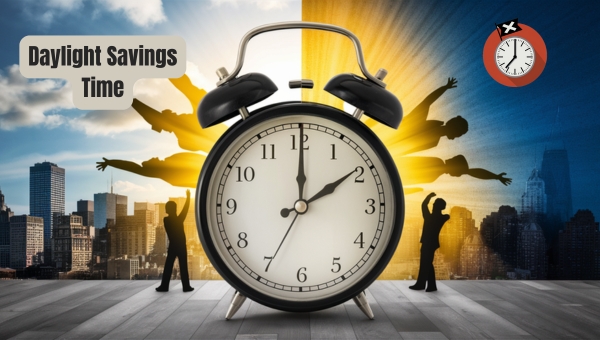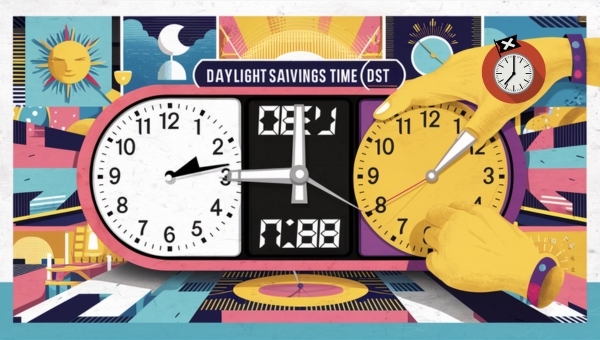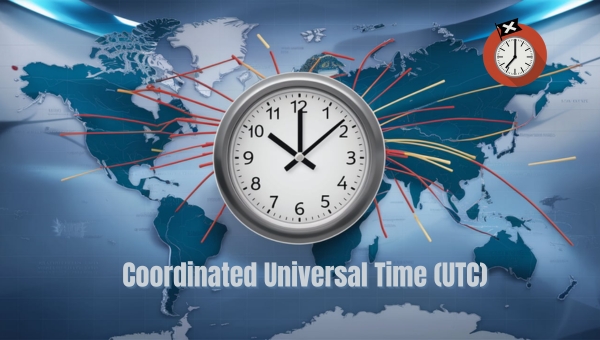Daylight Savings Time: How It Works and Why It Matters

Daylight Savings Time (DST) is a fascinating topic that impacts our daily lives in more ways than one. By reading this article, you’ll gain a comprehensive understanding of its origins, global adoption, and the adjustments we make each year.
We’ll explore the benefits and drawbacks of DST, including its effects on energy conservation, economic activities, and even our health. This deep dive will equip you with the knowledge to navigate this annual change confidently. Ready to uncover the mysteries of DST? Let’s dive in!
An In-Depth Look at the Daylight Savings Time (DST)
Daylight Savings Time (DST) is a fascinating concept that impacts our daily lives in more ways than one might think. It involves adjusting the clocks forward in the spring and backward in the fall to make better use of daylight during the evening hours.

This practice, though seemingly simple, has a rich history and varied global adoption. Understanding its origins and how different countries handle DST can provide valuable insights into its significance.
Origins and Historical Background
The idea of DST dates back to the early 20th century. It was first adopted during World War I as a way to conserve energy by reducing the need for artificial lighting in the evening. The concept was reintroduced during World War II for similar reasons.
Notably, Benjamin Franklin can be credited with proposing the idea of shifting the clocks to maximize daylight, although it wasn’t implemented until much later. The practice aimed to save fuel and resources during times of scarcity, making it a crucial strategy during wartime.
Global Adoption of DST
Daylight Savings Time is not universally adopted. Countries in Europe and North America predominantly observe DST, while many regions in Asia and Africa do not participate.
For example:
- United States: Most states observe DST, with notable exceptions like Hawaii and parts of Arizona.
- European Union: All member countries follow DST, changing the clocks on the last Sunday in March and October.
- Australia: Only some states and territories, like New South Wales and Victoria, observe DST.
- Asia: Countries like Japan and China do not observe DST, choosing instead to keep a consistent time year-round.
This diversity in adoption highlights the varying perspectives on the benefits and drawbacks of DST across the globe.
Daylight Savings Time (DST) Adjustments
Adjusting to Daylight Savings Time (DST) can be a bit tricky, but understanding how it works makes the process smoother. DST involves changing the clocks forward in spring and backward in fall.

This section will delve into the mechanics of these time shifts, explore their impact on our daily lives, and compare how various countries handle these transitions.
How DST Works?
Daylight Savings Time (DST) is designed to make better use of daylight during the longer days of spring and summer. In the spring, clocks are moved forward by one hour, typically in March. This change means that evenings have more daylight, which can be beneficial for various activities. In the fall, usually in November, clocks are set back by one hour.
This shift returns us to standard time, providing more morning daylight as days grow shorter. The rationale behind these adjustments is to optimize daylight hours and reduce the need for artificial lighting in the evening.
The Impact of DST on Daily Life
Daylight Savings Time (DST) affects various aspects of daily life. Here are some key impacts:
- Sleep Patterns: Adjusting the clocks can disrupt sleep schedules, making it harder to fall asleep or wake up on time.
- Work Schedules: The time change can affect productivity, especially during the first week of transition.
- Transportation: Changes in daylight hours can impact commuting, with potential safety concerns during darker mornings or evenings.
DST Time Changes in Various Countries
Different countries handle DST transitions in unique ways. Here’s a comparison:
- United States: DST starts on the second Sunday in March and ends on the first Sunday in November.
- European Union: DST begins on the last Sunday in March and ends on the last Sunday in October.
- Australia: Observed in some regions, DST starts on the first Sunday in October and ends on the first Sunday in April.
- Japan: Does not observe DST at all.
Understanding these variations can help in planning international travel or coordinating with colleagues in different regions.
The Benefits of Daylight Savings Time (DST)
Daylight Savings Time (DST) has several notable advantages that make it a significant practice in many parts of the world. From conserving energy to boosting economic activities and encouraging outdoor pursuits, DST offers a range of benefits. Let’s delve into how DST impacts various aspects of our lives.

Energy Conservation
One of the primary benefits of DST is its role in energy conservation. By shifting an hour of daylight from the morning to the evening, DST reduces the need for artificial lighting and heating.
Here are some key points:
- Reduces electricity consumption: With more daylight in the evening, households use less artificial lighting.
- Lowers heating costs: Extended daylight reduces the need for heating in the evening hours.
- Promotes efficient energy use: Shifts in energy demand help to balance and optimize energy usage.
Economic Impact
The economic benefits of DST are also significant. By extending daylight hours, various sectors experience a boost in activity and revenue.
Consider the following:
- Retail: Longer evenings encourage people to shop more, increasing retail sales.
- Travel and tourism: Extended daylight hours enhance travel experiences, leading to higher tourist spending.
- Business operations: Many businesses benefit from increased productivity and customer engagement during extended daylight hours.
Increased Outdoor Activities
DST also encourages people to spend more time outdoors, which has multiple benefits for both individuals and communities. Here are some examples:
- Recreational activities: Longer daylight hours make it easier for people to engage in sports and other recreational activities after work or school.
- Health benefits: Increased outdoor activities contribute to better physical and mental health.
- Community engagement: Extended daylight fosters community events and social interactions, strengthening community bonds.
By exploring these benefits, it’s clear that Daylight Savings Time (DST) plays a crucial role in various aspects of our daily lives, from conserving energy to enhancing economic activities and promoting outdoor pursuits.
The Drawbacks and Controversy Around DST
Daylight Savings Time (DST) is often a topic of debate due to its varied impacts on individuals and communities. While some people appreciate the extra daylight in the evening, others find the time shifts problematic. Let’s delve into some of the main drawbacks and controversies surrounding DST.
Health Effects
One of the most significant concerns regarding DST is its potential impact on health. Adjusting the clock by an hour can disrupt sleep patterns and affect overall well-being.
Some of the notable health effects include:
- Sleep Disruption: The change can lead to difficulties in falling asleep or waking up, affecting the quality and duration of sleep.
- Mental Well-being: Poor sleep quality can result in mood swings, irritability, and even depression.
- Physical Health: Lack of sufficient sleep is linked to various health issues such as heart disease, obesity, and weakened immune function.
DST and Productivity
Transitioning to or from DST can also pose challenges to productivity. The time change affects not just individuals but also workplaces and schools.
Here are some productivity-related issues:
- Reduced Efficiency: The first few days after the time change often see a drop in productivity as people adjust to the new schedule.
- Increased Fatigue: Sleep disruption can lead to fatigue, making it hard to focus and perform daily tasks effectively.
- Accidents and Errors: There is often a spike in workplace accidents and errors immediately following the transition to DST, likely due to decreased alertness.
Global Debate on DST Relevance
The relevance of DST in modern times is a matter of ongoing debate. Various arguments exist both for and against its continued use:
- Arguments for Abolition: Critics argue that the original reasons for DST, such as energy conservation, are less relevant today due to advancements in technology and changes in energy consumption patterns.
- Support for Continuation: Proponents highlight benefits such as extended daylight in the evenings, which can boost outdoor activities and retail sales.
- Regional Differences: Some regions have already abolished DST, while others continue to observe it, leading to inconsistencies and confusion, especially in global business and travel.
The conversation around DST is complex, involving health, productivity, and regional preferences. Whether it remains a fixture of modern life or becomes a relic of the past continues to be a topic of lively discussion.
Conclusion
Daylight Savings Time (DST) plays a significant role in how we manage our daily routines, from conserving energy to impacting our health. While there are both advantages and disadvantages to DST, it remains a topic of global discussion. Understanding its history, implementation, and effects can help us navigate its complexities more effectively. It’s important to stay informed about these changes and their implications.
If you found this article insightful, be sure to check out more of our blogs for a deeper dive into similar topics! Stay informed and empowered with our latest content.





